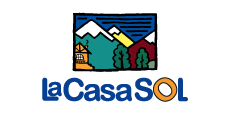
Otavalo “The city that you always return to”
 It is important to visit Otavalo to have a true understanding of the Ecuadorian culture and people. The landscapes, mountains and people make Otavalo a place that you will always want to return to.
It is important to visit Otavalo to have a true understanding of the Ecuadorian culture and people. The landscapes, mountains and people make Otavalo a place that you will always want to return to.
With 60.000 inhabitants, Otavalo is located two hours north of Quito in the Northern Sierra at 2.580 meters above sea level.
Otavalo hosts the largest and most famous Indigenous handcrafts market in South America each Saturday. The Plaza de los Ponchos public market (open weekdays as well) offers millions of handcrafted items made of cotton, wool, wood, leather, ceramics, etc., and attracts thousands of tourists and visitors. The Indigenous people of Otavalo are famous artisans and handcraft merchants, almost every house in Otavalo is a workshop or an art gallery.
You can visit small indian villages near Otavalo like Peguche, Agato, Carebuela and Iluman, where they produce textiles, blankets, bags, etc. Near by Cotacachi is famous for its beautiful leather products and San Antonio de Ibarra for its fine woodcarving and stonework. Also close by is Ibarra, a beautiful colonial city and only 20 kilometers northwest is The Chota Valley, an Afro-Ecuadorian settlement with a privileged micro-climate and sub-tropical environment.
The weather in Otavalo is spring like most of the year, with July through September being the summer months. Nature around Otavalo is magical. The Peguche Waterfall, surrounded by eucalyptus trees, is considered to be one of the most important ritual places for the indigenous people in Northern Ecuador. Only ten minutes from Otavalo are San Pablo, Mojanda and the Yahuarcocha lakes, and battle fields of the Inca, Cara and Imbaya, Ecuadorian indigenous warriors. Cuicocha or the godess’s lake, is nestled nearby in Cotacachi’s crater, part of the Cotacachi-Cayapas Ecological Reserve.
In the beginning of each spring, when the first corn and wild flowers come up, we celebrate the Pawkar Raymi, in honor to the crop’s bloom and to the Ayllus meeting Pacha Mama or mother earth. Festivities take place in historical, symbolical and sacred sites like the Peguche waterfall. Pegucheños, women and elderly people combine wild flowers with sacred water to make a special syrup in a ceremony called “Sisa Nawi Mayllai“.
Since Inca times in the Ecuadorian, Peruvian and Bolivian Andes, during the summer solstice at the end of June, we celebrate Inti Raymi (the Sun Festival), in honor of Pacha Mama or mother earth. Indigenous people with drums, flutes, guitars and violins dance in circles for 5 days and nights while women sing together to the God Sun.
During the first week of September, thousands of visitors come to Otavalo to take part in the “Yamor” festival, a celebration in honor of corn, the symbol of generosity and the fertility of earth. Enjoy the celebrations, typical indigenous food and a traditional beverage made of fermented corn, Chicha del Yamor.
November is important for the agricultural cycle in the Andean Cosmo-vision. During November we have a ritual called “Huanuy Puncha” to honor our ancestors, in which we share with relatives and friends a traditional drink called “Champus” and home made bread, making this day a special one in the Otavalo community.
Peguche
 Peguche, an indigenous Quichua community in Imbabura province just north of Otavalo, is surrounded by high mountains and inactive volcanos like Imbabura (5380 mt.) to the South, Cotacachi (5940 mt.) to the North West and Fuya Fuya (4950 mt.) to the South West. Also near Peguche are Pablo and Mojanda Lakes and the Peguche waterfall, a natural park admired by both Ecuadorian and foreign tourists.
Peguche, an indigenous Quichua community in Imbabura province just north of Otavalo, is surrounded by high mountains and inactive volcanos like Imbabura (5380 mt.) to the South, Cotacachi (5940 mt.) to the North West and Fuya Fuya (4950 mt.) to the South West. Also near Peguche are Pablo and Mojanda Lakes and the Peguche waterfall, a natural park admired by both Ecuadorian and foreign tourists.
The production of local arts and crafts is the main economic activity. The natives of this area, “Pegucheños”, are pioneers in making and designing textiles and often travel around the world as handcrafts merchants.
Their skillful hands have inherited the Pegucheño traditions in weaving, creating marvelous textiles out of a diverse number of materials for tapestries, blankets, sweaters, jackets, purses and many other items. Pegucheño textiles are known world wide for their excellent quality and attractive designs.
Peguche is also the cradle of famous Andean music and dancing groups like Ñanda-Mañachi, Centro Cultural Peguche, Jialli, Mashis, and many others.
Like many other Andean communities, the Peguche community celebrates “Inti Raymi”, or sun festival. Inti Raymi is the biggest and most famous Andean Ritual. It begins on June 24 when thousands of people visit the sacred places to take the “Baño Sagrado” or sacred bath as part of a purification ceremony.
They also celebrate “Paucar Raymi” each spring. Paucar Raymi is a time to honor the fertility of the land, and give thanks to “Taita Inti” or Father Sun for giving us the light of life and to “Quilla Mama” or Mother Moon, for protecting our dreams.
